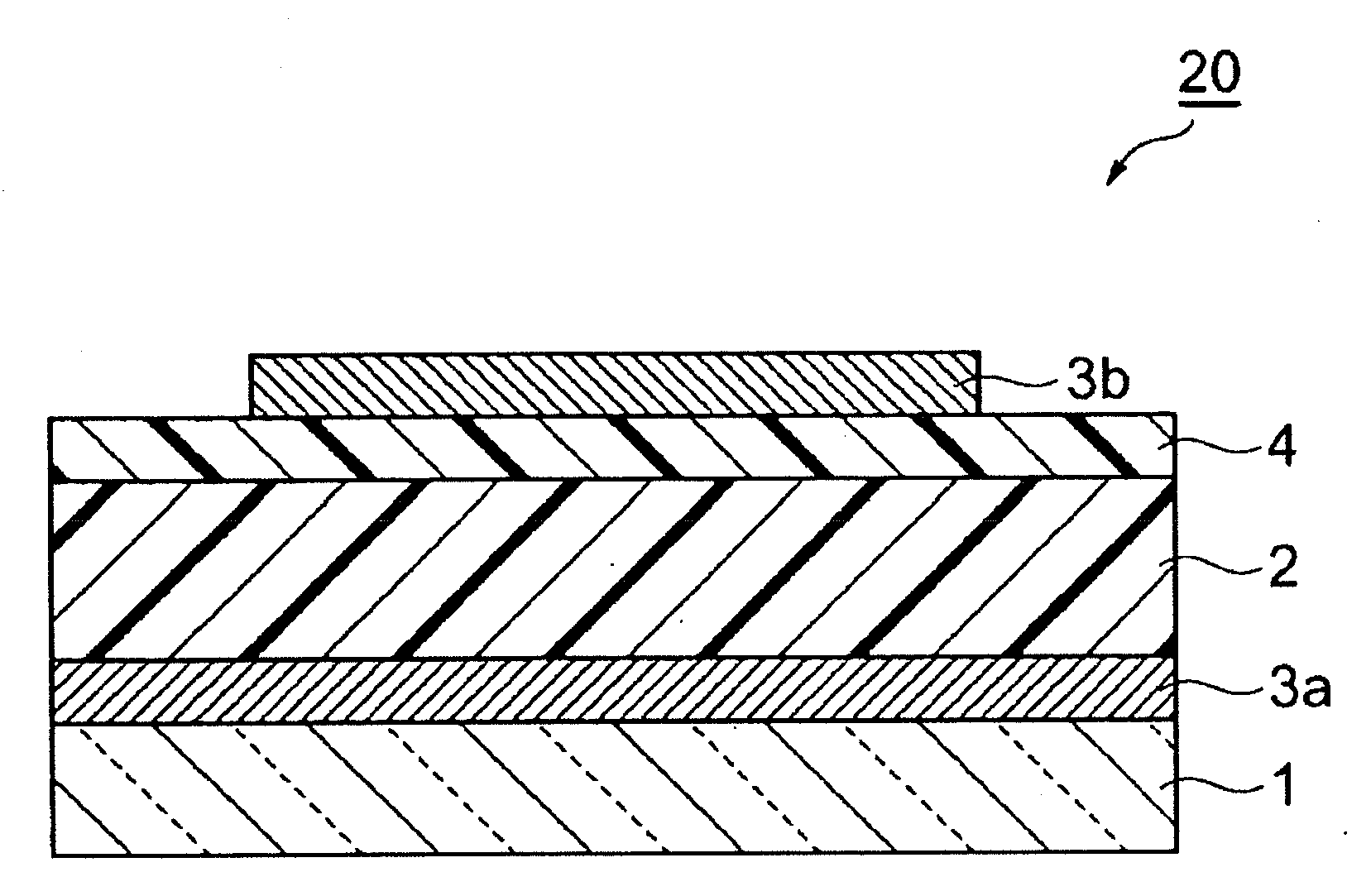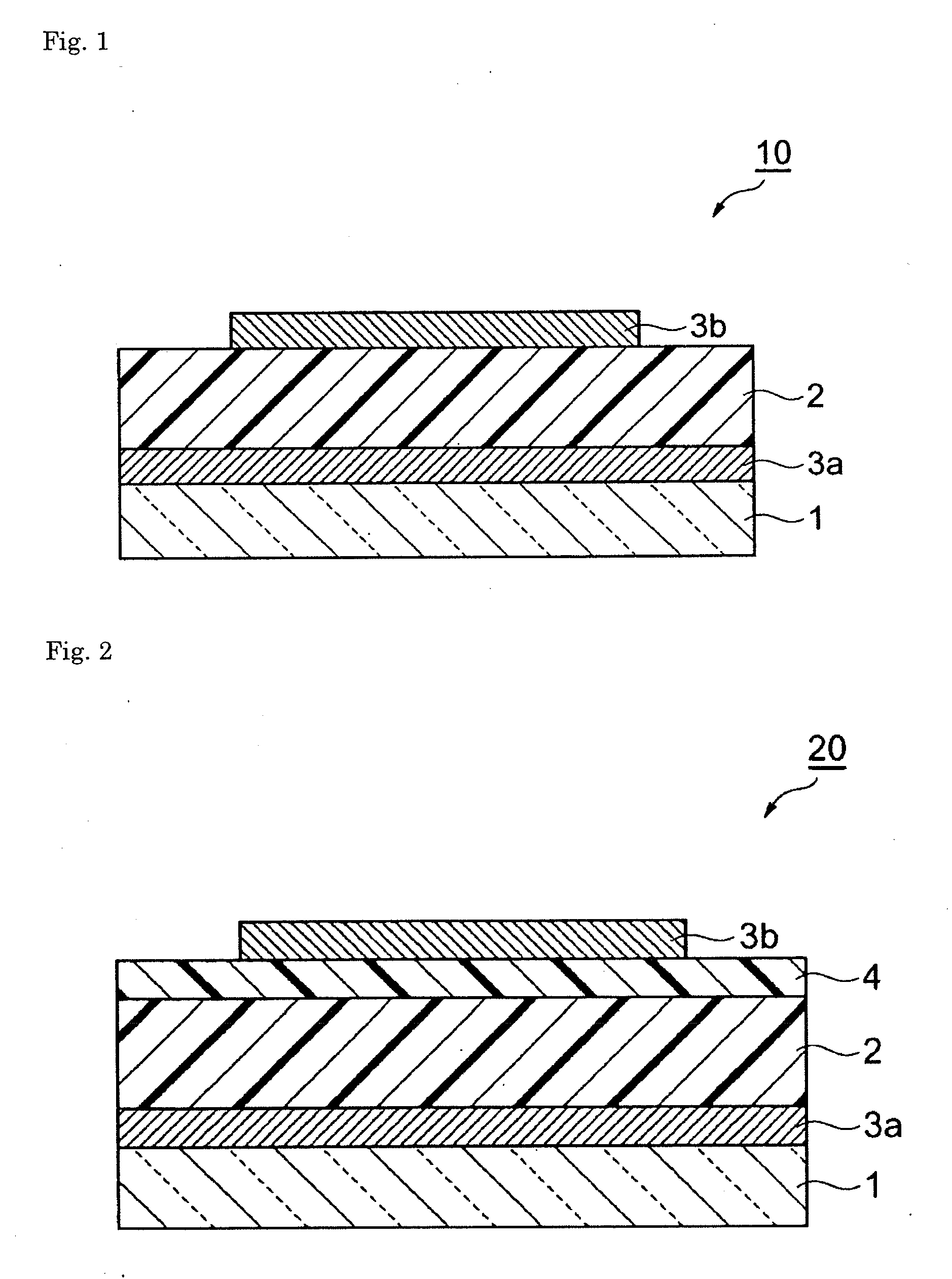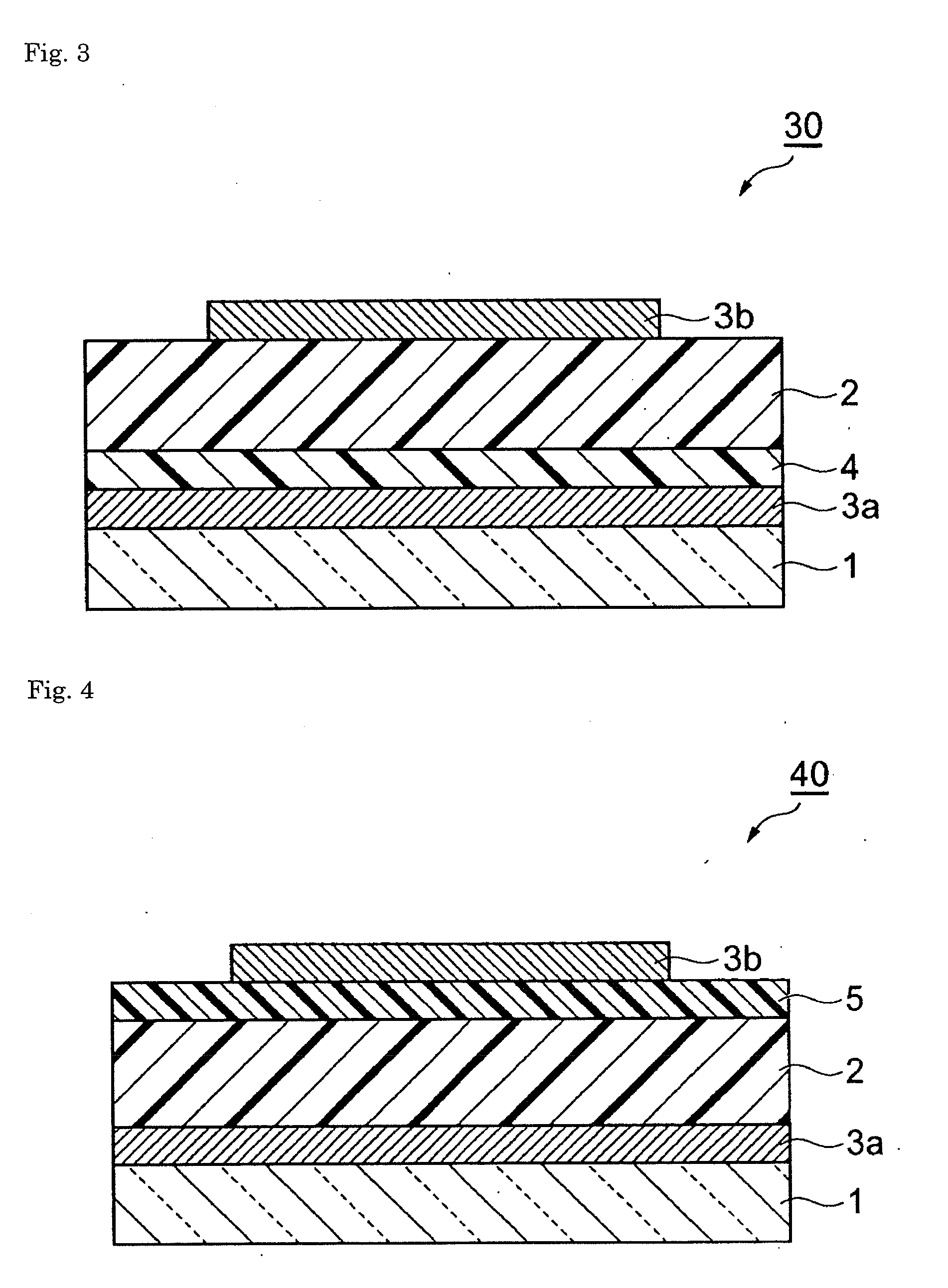Composition and organic photoelectric converter
- Summary
- Abstract
- Description
- Claims
- Application Information
AI Technical Summary
Benefits of technology
Problems solved by technology
Method used
Image
Examples
synthesis example 1
Synthesis of Polymer 1
[0115]Into a 2-L four-necked flask whose atmosphere was replaced with argon, 7.928 g (16.72 mmol) of a compound represented by the following formula (A), 13.00 g (17.60 mmol) of a compound represented by the following formula (B), 4.979 g of methyltrioctyl ammonium chloride (trade name: aliquat336, manufactured by Aldrich, CH3N[(CH2)7CH3]3Cl, density: 0.884 g / mL (25° C.), registered trademark of Henkel), and 405 mL of toluene were charged and subjected the inside system to argon bubbling for 30 minutes while stirring. 0.02 g of dichlorobis(triphenylphosphine)palladium (II) was added thereto and 42.2 mL of 2 mol / L of aqueous sodium carbonate solution was added dropwise thereto while increasing temperature to 105° C. and stirring. After the termination of dropwise addition, the solution was reacted for 5 hours, and 2.6 g of phenylboronic acid and 1.8 mL of toluene were added thereto and stirred at a temperature of 105° C. for 16 hours. In addition, 700 mL of tolu...
synthesis example 2
Synthesis of Polymer 2
[0117]Into a three-necked flask, 0.367 g (0.599 mmol) of a compound represented by the following formula (C), 0.206 g (0.630 mmol) of 5,5′-dibromo-2,2′-bithiophene, 0.4 mg of dichlorobis(triphenylphosphine)palladium (II), and 0.1 g of methyltrioctyl ammonium chloride (trade name: aliquat336, manufactured by Aldrich, CH3N[(CH2)7CH3]3Cl, density: 0.884 g / mL (25° C.)) were charged under a nitrogen atmosphere, and 19 mL of toluene previously subjected to nitrogen bubbling for 30 minutes was added thereto. The obtained solution was heated up to a temperature of 105° C., and 2 mL of 2 mol / L of aqueous sodium carbonate solution was added dropwise thereto. After the termination of dropwise addition, the solution was heated to reflux for 3 hours. To the obtained solution, 0.01 g of phenylboronic acid was added, the mixture was further heated to reflux for 5 hours, and 0.1 g of sodium N,N-dimethyldithiocarbamate trihydrate and 2 mL of ion-exchange water were added theret...
PUM
| Property | Measurement | Unit |
|---|---|---|
| Composition | aaaaa | aaaaa |
| Transparency | aaaaa | aaaaa |
Abstract
Description
Claims
Application Information
 Login to View More
Login to View More - R&D
- Intellectual Property
- Life Sciences
- Materials
- Tech Scout
- Unparalleled Data Quality
- Higher Quality Content
- 60% Fewer Hallucinations
Browse by: Latest US Patents, China's latest patents, Technical Efficacy Thesaurus, Application Domain, Technology Topic, Popular Technical Reports.
© 2025 PatSnap. All rights reserved.Legal|Privacy policy|Modern Slavery Act Transparency Statement|Sitemap|About US| Contact US: help@patsnap.com



